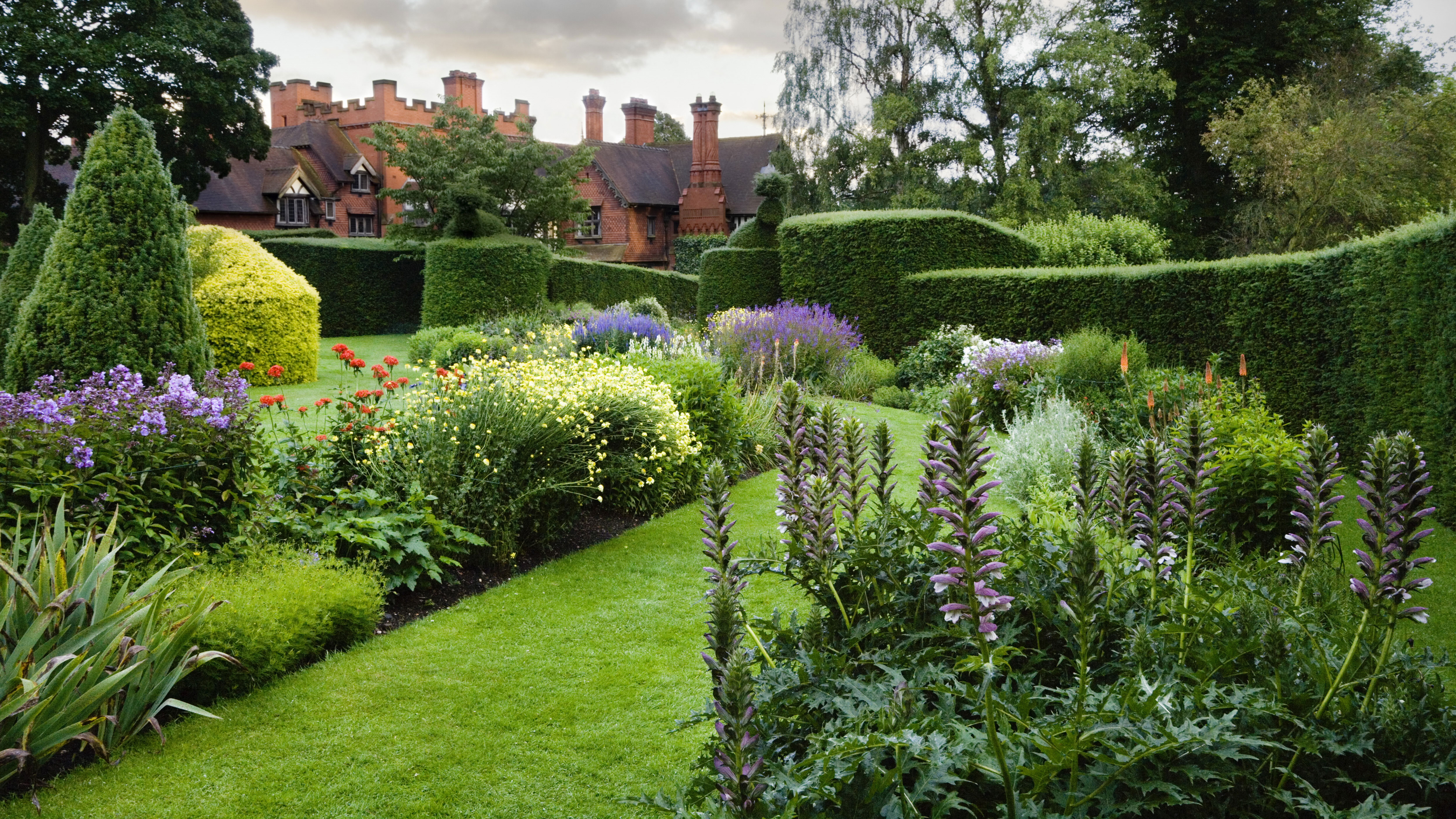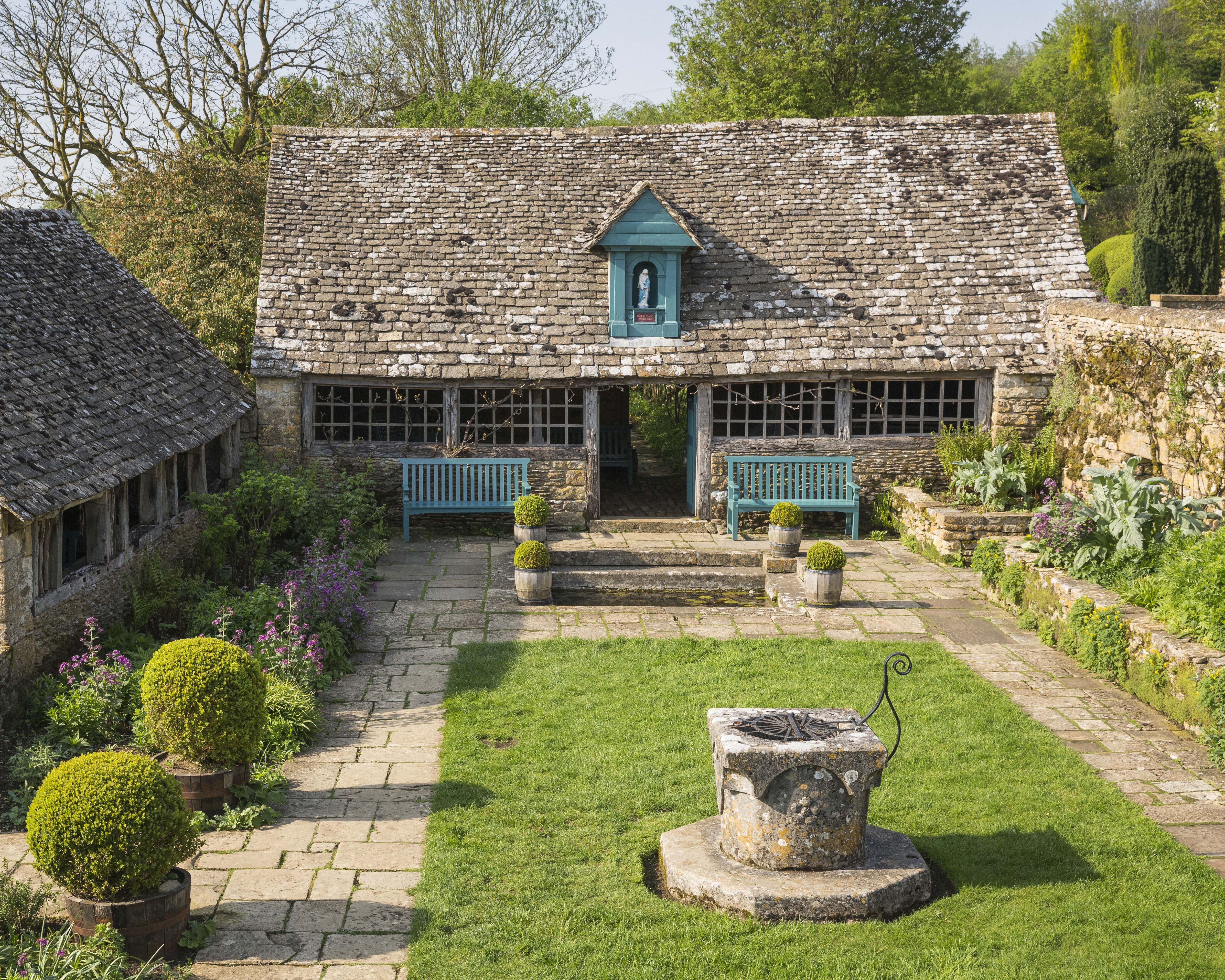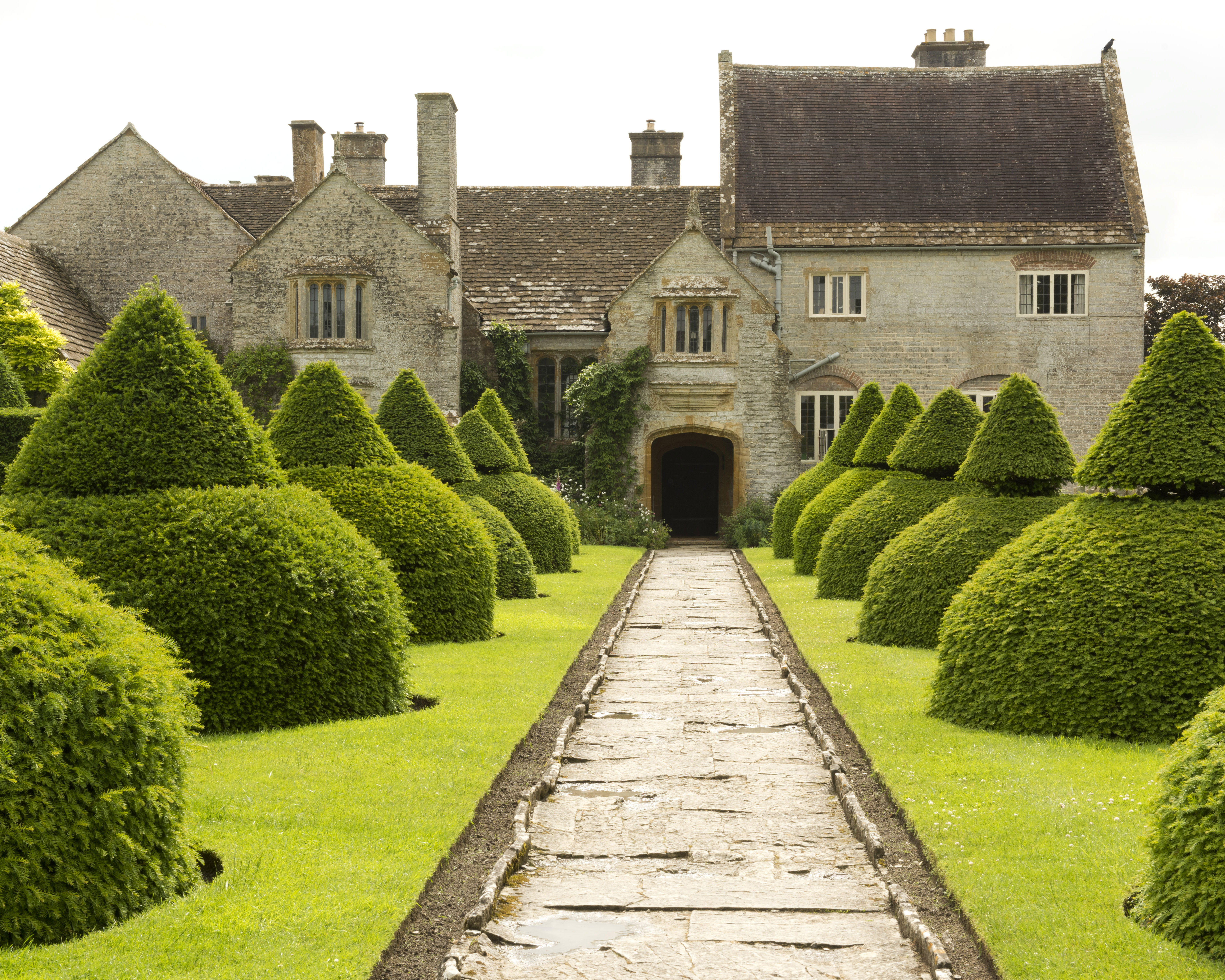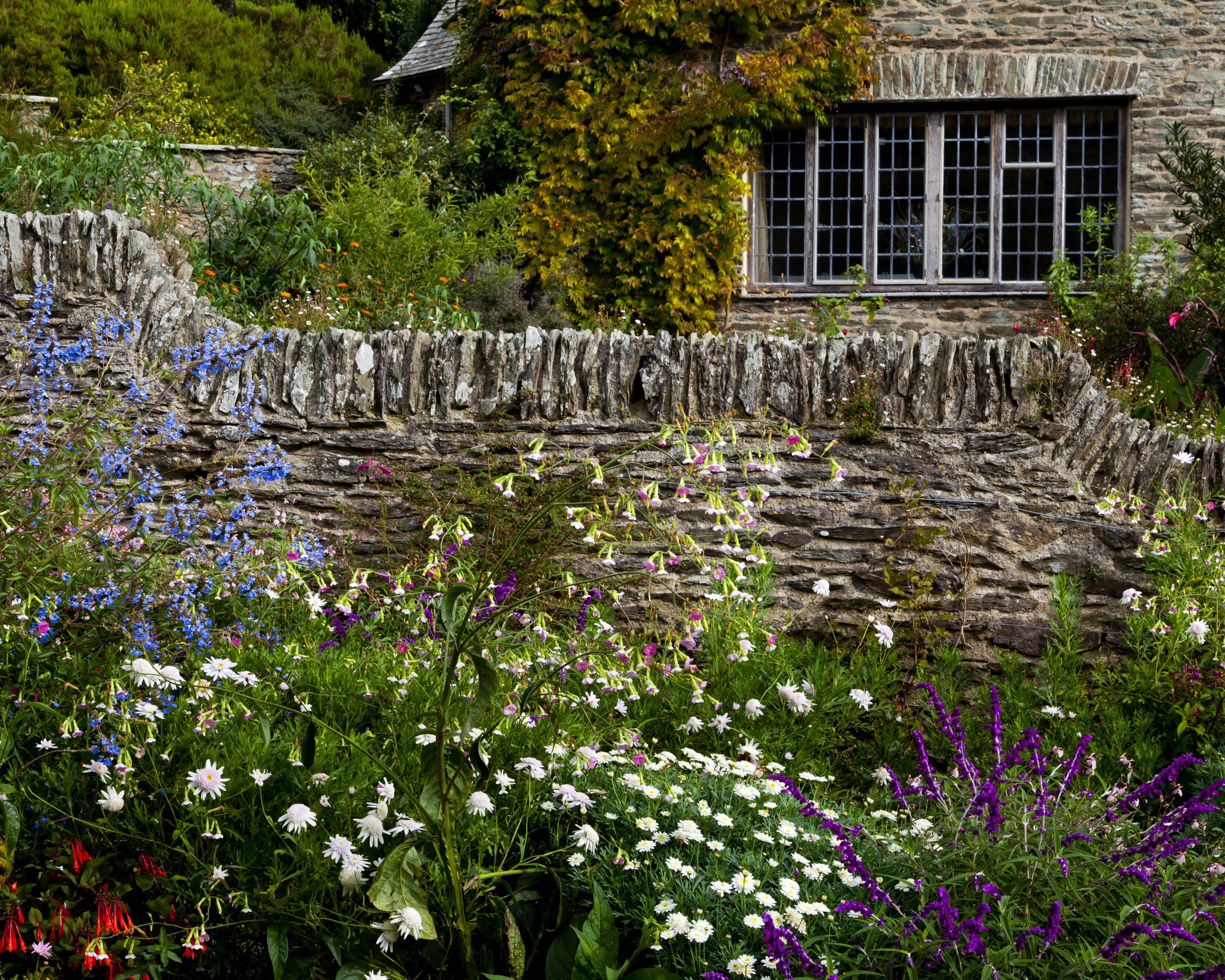Arts and crafts garden design – 5 key elements for a backyard
Use features of arts and crafts garden design to inspire the planting and ideas for your modern home garden


The key elements of Arts and Crafts garden design can still be used to inspire modern gardens today.
The late 19th century movement produced some of the most influential, world-renowned gardens, which continue to have an enormous influence on how we garden today.
Take inspiration from arts and craft garden designs and incorporate some of the hallmark features into the garden ideas for your modern backyard.
Here National Trust gardeners in the UK advise on some of the key elements to include if you are planning a garden with a traditional appeal.

Arts and crafts garden design – where to start
Arts and Crafts garden design is, of course, the perfect choice for anyone trying to authentically create a backyard to match their Arts and Crafts house style.
'Our contemporary gardening approaches – like gardening with an awareness of nature, and thinking of the garden as an additional living space – come from the Arts and Crafts period,' explains National Trust head gardener Rosie Fyles.
At the heart of the Arts and Crafts movement – as promoted by Morris & Co as far back as the 1860s – was a reaction against industrialization and mass production. There was a desire to revive craftsmanship and restore simplicity and honesty to how buildings and furnishings were created. This extended to the Arts and Crafts garden – the most British of English garden ideas.
Design expertise in your inbox – from inspiring decorating ideas and beautiful celebrity homes to practical gardening advice and shopping round-ups.
'Adapting the words of William Morris, have nothing in your garden that you do not know to be useful, or believe to be beautiful. The goals of valuing nature, simplicity and utility are achievable in any garden,' says Rosie.
1. See the garden as an extension of the house

An Arts and Crafts garden is seen as an extension of the house and a space for outdoor living and leisure.
When we are using our barbecue outside, or include outdoor kitchen ideas close enough to the house for accessibility, we have the Arts and Crafts garden designers and gardeners to thank for the idea.
'The garden was seen as a place to socialize, a leisure space with venues, or garden rooms, to be enjoyed,’ explains Patrick Swan, National Trust gardens and parks advisor.
‘Garden-making became anchored around a more domestic type of garden, achievable in urban properties by the ordinary home owner,' adds Patrick.
Embrace this aspect of the Arts and Crafts garden design and incorporate patio ideas for relaxation, or areas for sports and leisure and separate it into outdoor "rooms".
'Think about visual connections through repetition from house to garden,' adds Rosie.
2. Use natural, hand crafted elements in the garden

Arts and Crafts gardens incorporate the use of natural, often local materials and traditional craftsmanship, respecting regional traditions.
'The gardens were created with natural finishes, in harmony with the built environment so that you could sit in your garden and relax,' says Patrick.
To mimic this style use hand-crafted, natural elements – 'such as willow and hazel supports, or natural wood seating,' suggests Rosie Fyles.
When planning backyard landscaping ideas, look to use local materials that complement and reflect the fabric of the house.
3. Draw on the landscape around

An Arts and Crafts garden will sit comfortably and harmoniously within the local natural environment.
'The house and garden work together. It’s as if the house has grown up in the garden, the house fits within the landscape, with the planting wrapping its arms around the characteristics of the house,' explains Patrick Swan.
When planning flower bed ideas, 'draw on the landscape around you where possible – linking color, texture and even cultivars of locally found wild plants,' says Rosie Fyles.
The whole garden should be sympathetic to the environment around it, with a natural beauty and aesthetic impact, always combined with functionality.
4. Design a strong architectural style of garden

Arts and Crafts gardens have a strong architectural style. 'This is not just in terms of hard landscaping, but also in the use of clipped topiary, and shaped fast growing hedges,' explains Rosie Fyles.
Architectural elements that are incorporated include terraces, sometimes with steps and balustrades.
For instance the Arts and Crafts town garden of Goddards has three terraces. 'The closest to the house is planted most formally, then the planting becomes increasingly informal as you move away from the house. The low terrace has winding paths and a rock garden,' explains Rosie.
'So to create a modern Arts and Crafts garden, keep it simple, but ensure the garden has "good bones" – create interesting structure with hard landscaping, trees and shrubs,' she adds.
5. Plant abundant flower beds

The ethos of the Arts and Crafts era was to fill beds with abundantly flowering cottage garden plants.
'These included romantic plants, such as rambling climbers, drifts of foxgloves, irises, roses, peonies, rosemary, lavender, nepeta and delphiniums. Herbaceous borders were planted in a naturalistic style and close-planted in color drifts,' explains Rosie.
When choosing garden color schemes, the palette for planting would complement the building materials, helping the garden to sit comfortably and harmoniously with the house.

Many of the flowers chosen were the same as those that would be used in cottage garden styles of Victorian garden design. However, what sets apart the herbaceous borders of an arts and crafts garden is often the strong, geometric lines of beds, and the billowing flowers juxtaposed with hard landscaping.
'What I love about Arts and Crafts gardens is the attention to detail that goes into everything. The individual details are beautiful, but the sum of those parts together is food for the eyes and the soul,' says Rosie.
Rachel is senior content editor, and writes gardening content for homesandgardens.com, Homes & Gardens magazine, and its sister titles Period Living Magazine and Country Homes & Interiors. She has written for lifestyle magazines for many years, with a particular focus on gardening, historic houses and arts and crafts, but started out her journalism career in BBC radio, where she enjoyed reporting on and writing programme scripts for all manner of stories. Rachel then moved into regional lifestyle magazines, where the topics she wrote about, and people she interviewed, were as varied and eclectic as they were on radio. Always harboring a passion for homes and gardens, she jumped at the opportunity to work on The English Home and The English Garden magazines for a number of years, before joining the Period Living team.
